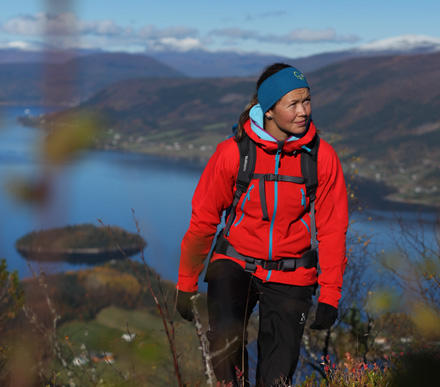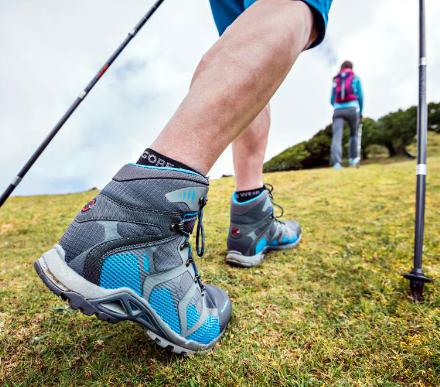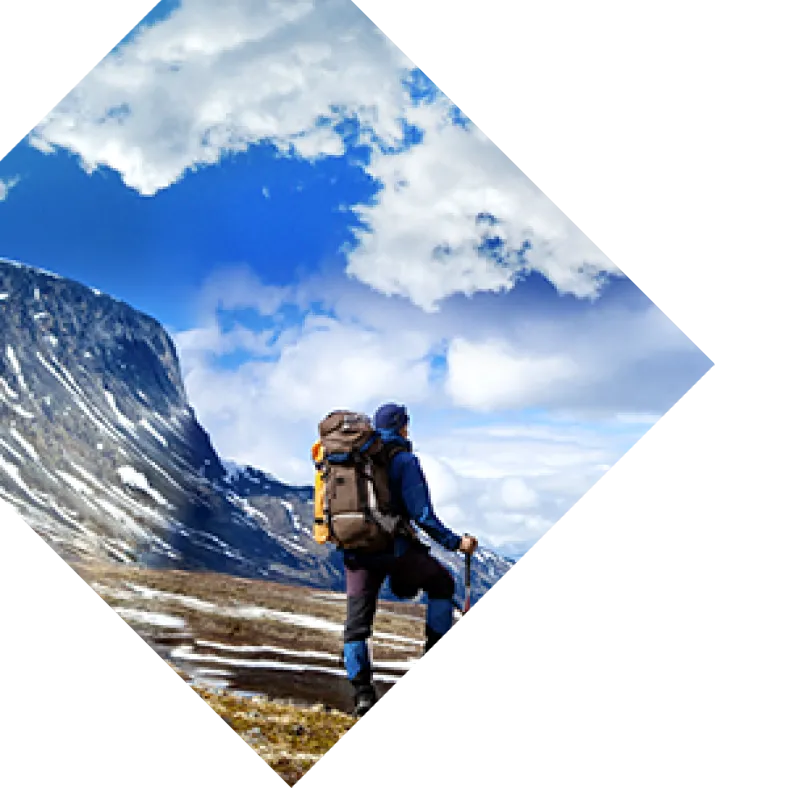For most of us, hiking is one of the best things to do when you get tired of the daily grind. There’s something about fresh air and the lack of city sounds that soothes the soul. But we’ve found that hiking in the wrong clothing can ruin the experience. All it takes is one piece of missing gear to spend your beautiful hike wishing for a warm fireplace! When the weather gets chilly and the sun starts to hide, it can be harder to get outdoors. But we’re going to keep trekking and finish the year strong. We’ve put together this guide on what to wear when hiking so you can, too. Here’s how outdoor clothing works, from start to finish.
 Your hiking gear system
Your hiking gear system
Hiking attire and other outdoor clothing is structured into layers that you can wear and shed as the weather and your exertion levels change. Understanding those unique layers and how they interact with one another is the key to putting together a hiking gear checklist that will work with a huge variety of weather conditions. A complete hiking gear system consists of a base layer next to the skin, an insulation layer for warmth, a shell to keep out the wind and rain, hiking boots or shoes, and accessories as needed. These layers can be mixed and matched according to the weather and your activity level. Here’s a bit about each layer and what you should look for before you make a purchase.
Base layer
Have you ever thrown on a cotton t-shirt and hit the trails? Often if it’s a warm day you start to sweat, and then the shirt gets soaked. The fabric starts to cause chafing. Casual hikers tend to go for cotton, but a true base layer should pull moisture away from your skin, not trap water against it. After all, if the sun goes down and the temperature drops and your shirt’s still wet, you could be at risk for a very uncomfortable night, or worse, hypothermia. A base layer, sometimes called a “thermal layer,” should be comfortably form-fitted to your body. Instead of cotton, look for garments made from one of these materials:
- Synthetic fabric: Synthetic garments that are specifically made for athletic activities are the most cost-effective and low-maintenance choice as far as base layers go. Look for garments that say “wicking” on the tag, which means it’s designed to “wick” the moisture away from your skin.
- Merino wool: Lighter and softer from other wools, merino is a fantastic material that will keep you warm even if it gets wet and even has antibacterial properties (meaning you can wear it for a few days without getting smelly—fantastic for those longer treks). Note that wool doesn’t dry quite as fast as synthetic fabrics
- Bamboo and bamboo blends: Good bamboo fiber garments are harder to find, but their super-soft fibers are great if your skin is sensitive. Plus, they’re sustainable!
The coverage of the base layer should depend on the weather. Sunny summer day? A short sleeve shirt and shorts is usually fine. But if sun exposure, bugs, or underbrush is a concern, you’ll probably want to opt for lightweight pants instead. Just make sure they’re UV-resistant, or else put on sunscreen underneath; some thinner layers might seem dark, but they can let just enough light through to burn your legs.
Insulating layer
Any time you’re hiking somewhere cold, an insulating layer is critical. Look for garments made from either fleece or goose down. Fleece is popular and cost-effective, but the downfall is that it lets the wind through, so you’ll need something else on top. Down is warmer, but it’s useless once it gets wet. If you’re going to be wandering around in the dead of winter, you can go even heavier by using a light insulated jacket. Still cold? Double up by putting that jacket on top of fleece. It’s pretty bulky, but the warmth can be worth it. For a lighter option, you can use a second base layer instead of traditional insulation, like a merino layer over your technical base layer.
Shell layer
You’ll want a jacket made with waterproof fabric (to keep the weather out) that’s also breathable (to let your perspiration escape and keep your body dry). Without that breathability, your body can overheat (yes, even in the freezing cold) and leave you sweating far more than you should be. For mild weather, a lighter shell will offer just enough protection from a sudden rainstorm or windy day. If you need something heavy-duty, you can also find insulated shells, which might take out some of the bulk by replacing the insulating layer. However, if the weather warms up you won’t have many options of layering.
Footwear
 The best shoes for the job will vary by the terrain. If you’re traveling over rocks and underbrush, heavier boots with stiff midsoles are the way to go. For gentler dirt trails, you can use a hiking shoe or even trail running shoes. Like the rest of your layers, breathability is important to keep your feet dry and comfortable. For the same reason, your footwear should be waterproof. The most versatile choice for all but the most extreme trails is a waterproof, breathable hiking boot, and one of our favorites is the Mammut Comfort High GTX® SURROUND® Boot.
The best shoes for the job will vary by the terrain. If you’re traveling over rocks and underbrush, heavier boots with stiff midsoles are the way to go. For gentler dirt trails, you can use a hiking shoe or even trail running shoes. Like the rest of your layers, breathability is important to keep your feet dry and comfortable. For the same reason, your footwear should be waterproof. The most versatile choice for all but the most extreme trails is a waterproof, breathable hiking boot, and one of our favorites is the Mammut Comfort High GTX® SURROUND® Boot.
Backpack
Where are you going to keep those extra layers when it gets too warm? Time to pick a backpack. You’ll only need a small pack with the essentials for day trips. But for overnight backpacking, you’ll want something big enough to hold a tent and sleeping gear as well. Finding a backpack that fits well is an art, a science, and sometimes completely frustrating. Learn how to pick out the right one with this guide from REI.
Accessories
Here are a few more things you’ll want to consider bringing on your hike:
- Headwear: Don’t forget a hat! Wool beanies are warm for winter, but they can be itchy. We prefer something more durable, like the Outdoor Research Rando Cap. In summertime, you can cover up with a lightweight, wide-brimmed cap to protect you from the sun and rain.
- Gloves: The best gloves, like your other gear, keep water out and let the sweat escape. You can also find gloves with removable liners to help you layer. For most cold-weather hiking or backpacking trips, we recommend the Arc’teryx Beta AR Glove.
- Trekking Poles: While not needed for all hikes, a good set of poles (also called hiking sticks) can help you keep your balance on uneven terrain, as well as reduce the weight on your knees and hips. You can use just one pole for easier trails, but in general you’ll want to use two. Most trekking poles are collapsible for easy carrying (like these Black Diamond trekking poles). Just make sure you choose a length that will fit comfortably in your backpack!
Ready to put it all together? We have windproof, waterproof, and breathable hiking clothes ready for your next adventure.





